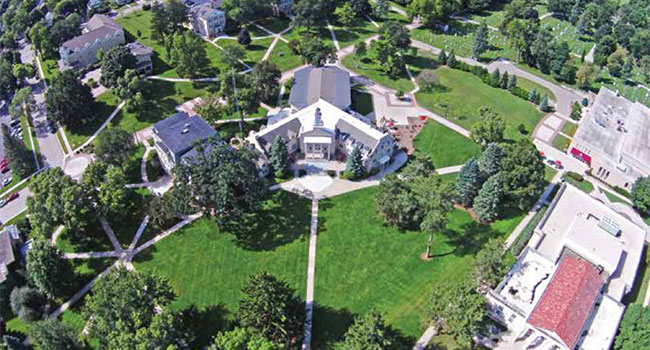
Streamlining Today's Campuses
Evolving technology is keeping campuses more secure
- By Mitchell Kane
- January 01, 2018
As K-12 and higher education campuses work diligently to
advance security measures in the wake of increased risk
across the nation, more administrations are searching for
ways to make smart capital investments. With the rising
focus on software- and cloud-based solutions, it is easier
than ever to achieve integration between security-specific systems and
database management systems for a streamlined approach. Students
are constantly on the move from one building to another, and today’s
open campuses have many scattered points of entry, making access
control technology crucial for protecting not only the students but the
staff and school’s assets as well.
Card readers and alarm systems provide the valuable access control
data required to keep intruders out and safeguard a campus, while
administrators manage dining hall or dorm access and classroom
schedules from completely different systems. With today’s evolving
technology, modern campuses are using security and IT functionality
to address more than just security, allowing more streamlined data
management and information to be gleaned from all systems to aid
administrators in determining how that data is best used. Here are a
few ways this can be done.
Energy. When access control systems are integrated with other
technology, the simple act of swiping a card can communicate to the
building management system to turn on lights in a specific area of a
building. The same type of integrated system can also record when the
last person leaves a building and turn down the temperature or lighting
once the building is no longer in use. Not only does this contribute
to gathering data on building usage for management purposes, but
using access control data for energy efficiency can also lead to a significant
reduction in energy use and costs.
Event management. Comprehensively monitoring every conference
or activity that takes place on a college campus can be difficult,
leading administrators to try and find new ways of granting and
restricting access to buildings and classrooms. One new way security
officials are avoiding problems with access control is by integrating
event management systems with access control solutions.
Access control technology that already exists to secure facilities can
also be used to make building scheduling easier. One single reservation
system can be used to allow students to reserve a meeting space or
classroom quickly and easily without having to be physically let in the
room. For example, a student’s ID card can be used both as a method
of identification as well as a tool to access a dining hall, dorm room or
classroom at a specific time, such as for a late class or study sessions
after hours. Campuses are turning toward allowing students to reserve labs or room space with their student ID cards from a single reservation system, which automatically grants or restricts access based on
time of day. This saves significant time for building managers by avoiding
having to grant or restrict access manually.
Additionally, this data can allow for the doors to be automatically
unlocked for an event and relocked afterward, such as when a professor
holds a late study session for students in a specific class. With just
a bit of information, administrators managing a building can create
“rules” for an entire list of students that will grant them access to a
classroom or lecture hall for a specific time period.
Analytics. Data gathered from disparate systems, such as access
points, building management systems and human resources software
platforms, can be combined into a single platform to give officials a
more comprehensive view of the campus landscape. Today’s higher
education facilities are exploring additional ways to mine this data
from disparate systems to provide insight into how students are using
a particular building, classroom or area of the university. This data
can help analyze traffic flow patterns that can streamline better campus-
wide planning and operations.
Officials also look toward these analytics to help pinpoint problems
before they arise, which can help thwart potential threats to the safety
and security of faculty and students.
This article originally appeared in the January 2018 issue of Campus Security Today.
About the Author
Mitchell Kane is the president of Vanderbilt Technologies.